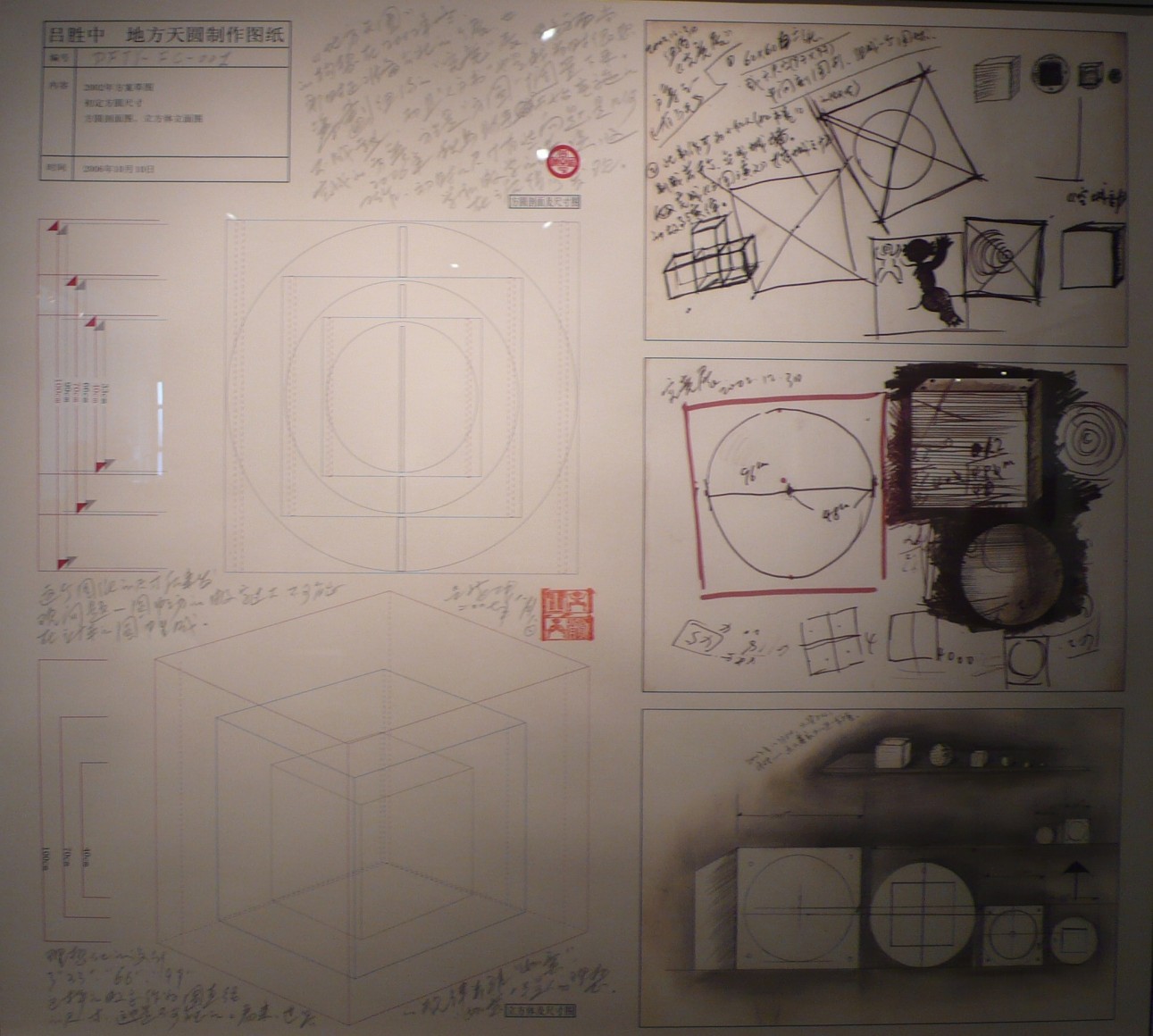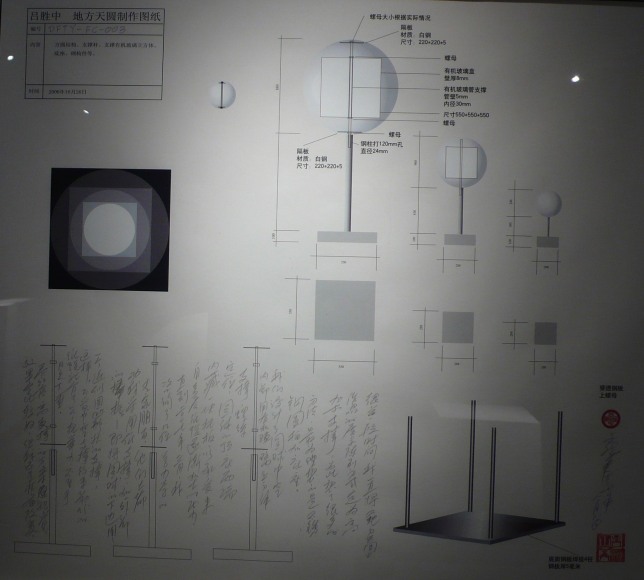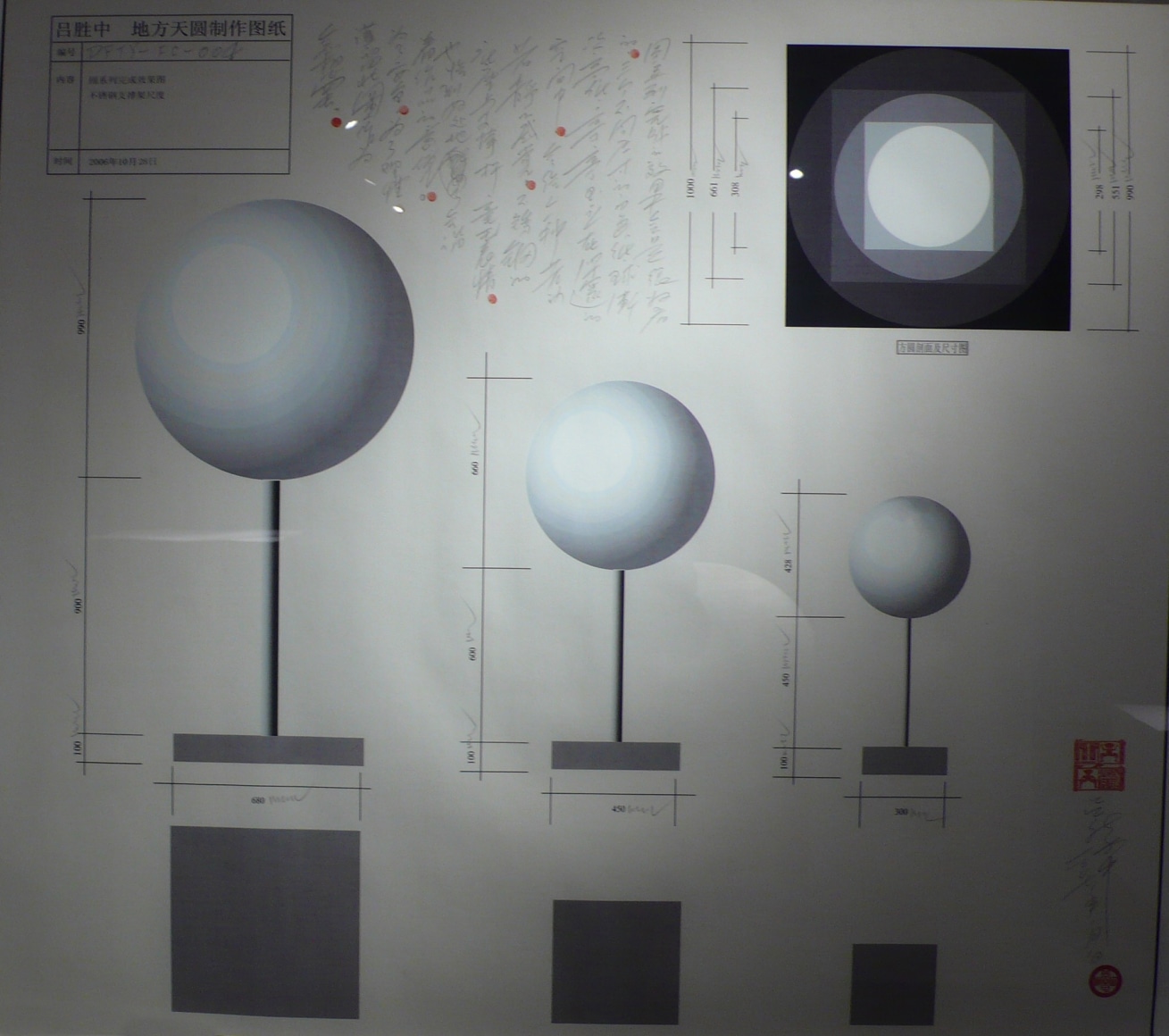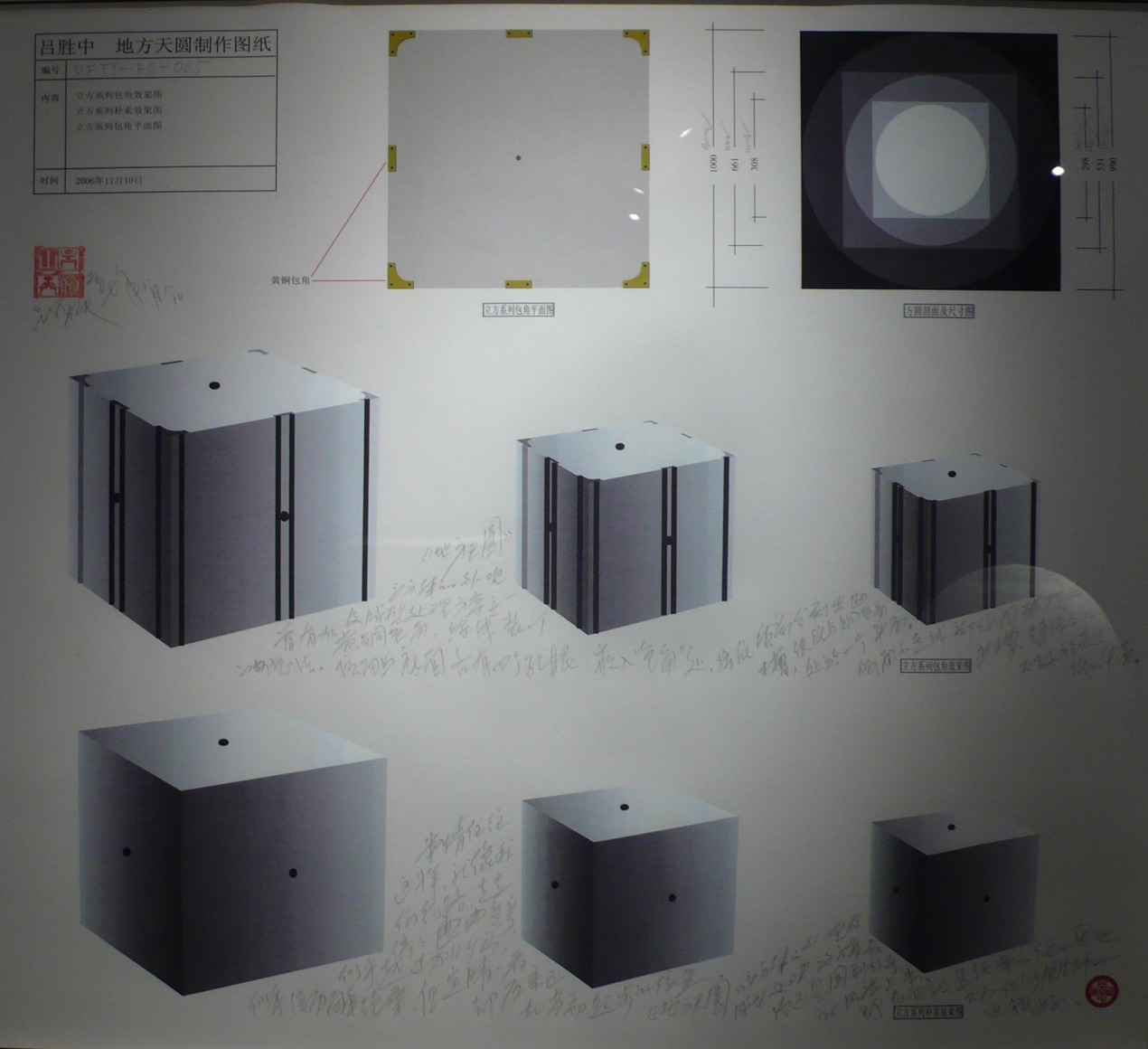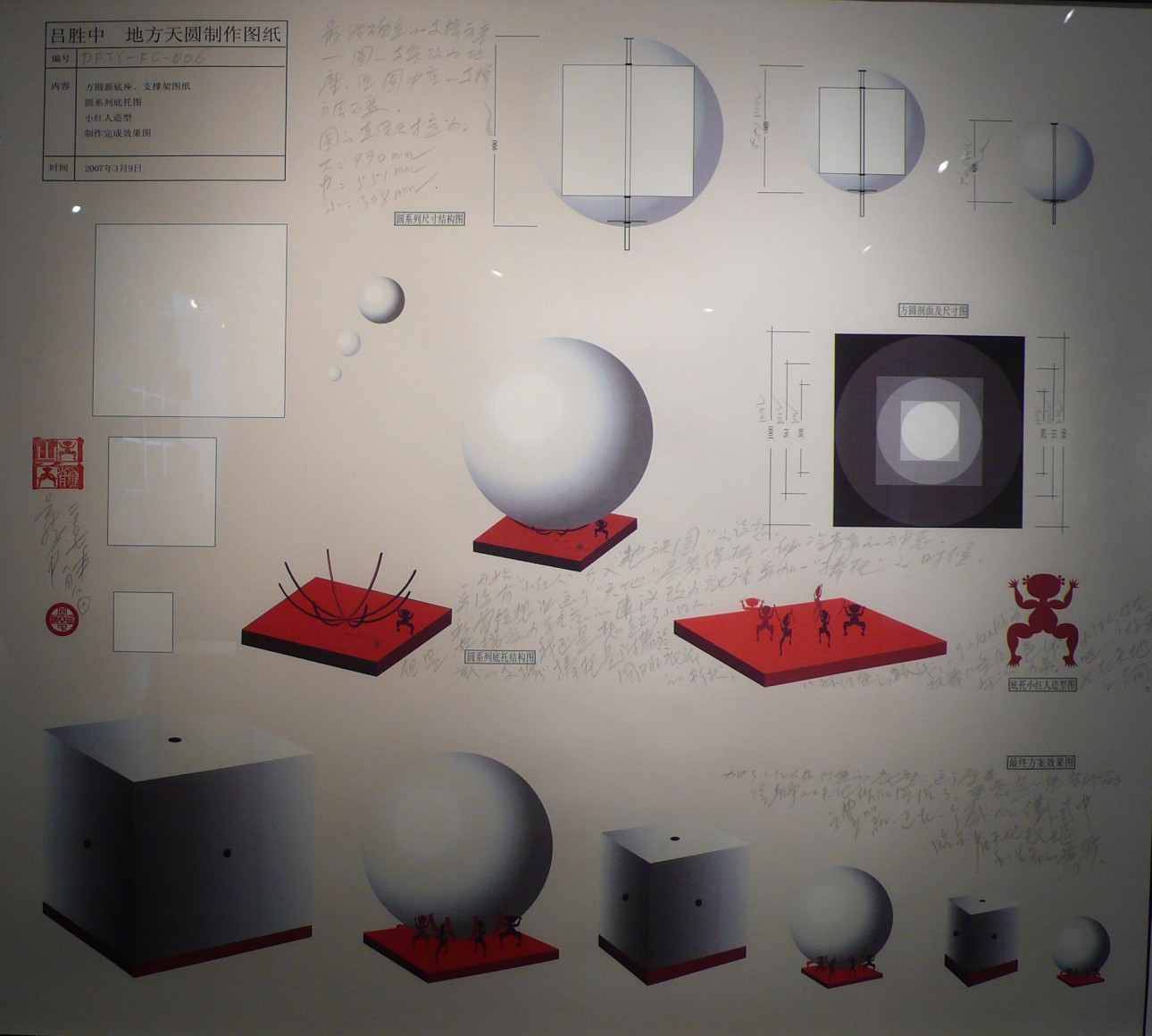Chambers Fine Art is pleased to announce the opening on September 6, 2007 of Square Earth, Round Heaven by Lu Shengzhong. This will be the artist’s third exhibition at the gallery, following First Encounter in 2001 and The Book of Humanity in 2004. Lu Shengzhong works in the traditional Chinese medium of paper-cut. During the more than twenty years in which he has worked almost exclusively in this medium – the major exceptions being a series of free-standing metal versions of his signature motif, the Little Red Figure – Lu Shengzhong has developed extraordinary technical skills and has moved far beyond the self-imposed limitation of his original source of inspiration, the decorative and symbolic works executed by peasant women.
The two New York exhibitions have shown a remarkable development. For First Encounter the majestic panels of Poetry of Harmony and Great Peace and Tranquility occupied the walls of the gallery, creating a hushed, somber environment in which the intricate filigree of shapes cut from red paper gleamed in red against a black background. Three years later in 2004 the focus moved from the walls to a series of obsessively crafted books and objects titled Human Bricks in which the shapes of many thousands of Little Red Figures carved from rectangular stacks of paper were mounted in many layers and fluttered in the breeze.
At first glance the six geometric forms, three cubes and three spheres carved from paper in the present exhibition, seem to indicate that Lu Shengzhong has discovered Minimalism, paying his respects to the Little Red figures only in the eight figures that support the spheres. But as Robert E. Harrist, Jr. points out in his introduction to the catalogue, appearances are deceptive. “At the center of the five exposed sides of the cubes are “peep holes” that invite the viewer to look inside. Doing so results in a surprising discovery: inside the cubes are spherical voids. What cannot be seen is that the spheres are hollow as well. These voids and corresponding solids were produced through a methodical sequence of steps. Lu Shengzhong began by cutting circles of graduated diameters from the square sheets of paper that make up the first cube. These circles, stacked on top of each other, form the first sphere. From within these circles, Lu cut squares that yielded the paper for the second cube. Circles cut from the sheets of that cube form the second sphere. Lu continued cutting squares from within circles, and circles from within squares, until producing the final sphere, which is solid.”
The relationship between positive and negative shapes cut from paper and between solids and voids are rich in cultural and philosophical associations. Harrist refers to familiar conceptual binaries such as yin/yang, body/soul, inner/outer, spirit/form and Chinese/foreign that are deeply embedded in Lu Shengzhong’s consciousness and revealed through his mastery of technique.
As Christophe W. Mao remarks: “The art of Lu Shengzhong defies all expectations of what contemporary Chinese art should be. It looks back in time thousands of years and seems to be unaffected by what is going on in the world today. That is particularly difficult in Beijing as the city gears up for the Olympics. There is not a trace of antiquarianism, however, and no self-consciousness at all. The geometric forms of Square Earth, Round Heaven represent a dramatic shift in Lu Shengzhong’s work as it moved with great assurance into three dimensions.”
*A catalog designed by the artist will be available.
前波画廊有幸于2007年9月6日起举办《吕胜中:地方天圆》展览。这是继2001年《初次见面》及2004年《人文书》之后,该位艺术家在前波画廊举办的第三次个人展览。二十多年来,吕胜中一直致力于剪纸这一中国传统媒介——比较显著的例外,是以一系列由金属独立支撑的标志性符号小红人。这些作品都体现出艺术家超乎寻常的技巧,超越了他灵感的最初来源,及此来源可能带来的制约——即农村妇女所制作的剪纸作品的装饰性和符号化。
在纽约举办的前两次展览也显著的揭示出艺术家创作的发展。在《初次见面》展览中,《和合诗卷》和《大平安》的巨幅版面占据了画廊墙面,营造出一种宁静而阴郁的氛围,用红纸裁剪的复杂人形在黑色背景上泛着红色微光。三年后的2004年,焦点从墙面转移到一系列题为《人文书》的手工书和物品上,数千个从成叠的矩形纸张上剪出的小红人形象,被安放在许多页面上,在微风中摆动。
此次展览中用纸张裁切出来的三个正方体和三个球体,似乎显示出吕胜中已发现了极简主义的手法,仅在支撑球体的八个小人身上仍然保留着小红人的影子。但是正如韓文彬(Robert Harrist., Jr.)在展览图录序言中所指出的,外表往往具有欺骗性。“在立方体五个暴露在外的平面上,每个中心都有一个‘窥视孔’,观众可以向里面观看,并由此得到惊人的发现:立方体里面,是球形的中空。而观众无法看见的,是此球体也为中空。这些中空以及相对应的非中空,是通过一系列系统的步骤制作出来的。吕胜中一开始先从组成第一个立方体的正方形纸张上切割出圆形,而圆形的直径逐渐减小。这些圆形叠在一起,就构成了第一个球形。在这些圆形的内部,吕胜中切出正方形,形成了第二个立方体。从这个立方体切成的直径逐渐缩小的圆形,形成了第二个球体。吕胜中继续从这些圆形纸张切出立方形,又从正方形纸张切出圆形,直到切出最后一个球体。而最后的球体是实心的”。
纸张剪切形成的正负像之间,以及实体与中空之间的关系,在文化和哲学传统中都是十分丰富的。韓文彬指出,人们所熟知的二元论概念,如阴阳、身体与灵魂、内外、精神与形式以及中与外等,深深地根植在吕胜中的潜意识当中,又通过他对技巧的把握而表现出来。
就像茅为清指出的:“吕胜中的艺术作品并不关注人们对中国当代艺术应该如何如何的期望。他回首瞻望数千年之前,似乎丝毫不为当今世上正在发生的事件所动。在北京这座为奥运而飞速发展的城市里,尤其难而可贵。然而,其中没有好古的痕迹,也没有丝毫扭捏作态。《地方天圆》中的几何形体代表了吕胜中作品的一个重要转变,及相当自信地转向了三维立体空间”。
*提供展览目录

